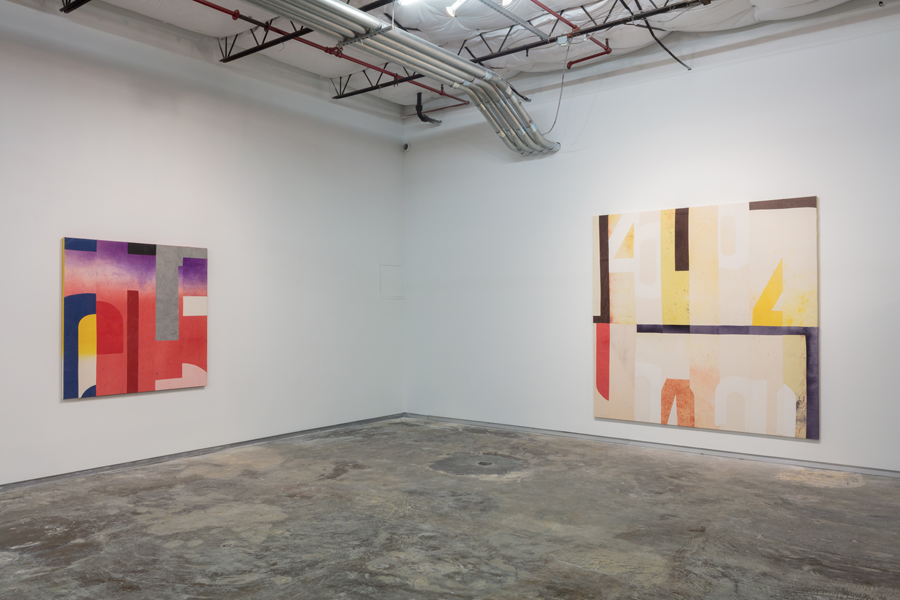Pia Camil
Dallas Contemporary, Dallas, USA
Dallas Contemporary, Dallas, USA

A highlight of the 2017 spring season in New York was the clutch of exhibitions featuring abstract artworks by women. The Museum of Modern Art presented the art historical corrective ‘Making Space: Women Artists and Postwar Abstraction’, and more inspiring still was the Met Breuer’s Lygia Pape retrospective and Luhring Augustine’s well-timed companion show of objects by fellow Brazilian neo-concretist Lygia Clark. Pape and Clark were among the leaders of an avant-garde group of artists who experimented with geometric form and colour in 1950s Rio de Janeiro. In the following decade, they applied this language to participatory ‘open’ works that celebrated the city and its diverse inhabitants, from Clark’s ‘Bichos’ series (Critters, begun c.1960) – hinged metal sculptures that anyone could reconfigure – to Pape’s Divisor (Divider, 1968), an enormous white cloth through which people of all ages and shades were invited to poke their faces and march together in the streets.

This history hums in the background of ‘Bara, Bara, Bara’, Pia Camil’s current solo exhibition, which occupies nearly 1,200 square metres of the cavernous, converted warehouse of Dallas Contemporary. ‘A Pot for a Latch’, Camil’s 2016 solo project at New York’s New Museum, invited visitors to add to and take from commercial goods she installed on grid-like racks. Similarly, ‘Bara, Bara, Bara’ engages with the informal commerce that defines daily life in Mexico City, where Camil was born and is based (bara is short for the Spanish word barato, or cheap).
The larger of the show’s two galleries holds the installation Divisor Pirata (Pirated Divider, 2017), Camil’s homage to Pape’s famous work. The version here is a patchwork of seven colourful tarps stitched from cotton t-shirts that hang low from the ceiling. The work’s structure references the source of its material: the t-shirts were manufactured in Latin America for consumer use in the US, and then shipped back over the border for resale in informal markets in Mexico, many of which are shaded by tarps. At nearly 800 square metres, Divisor Pirata is impressive, and while its material connection to the inequities of transnational commerce will register for some viewers, its reference to Pape’s piece is much clearer; during the run of the show, it was even deinstalled and paraded through the streets of Dallas.

Camil’s work is more absorbing and lyrical when she synthesizes the history of abstraction and the commercial landscape of Mexico City using visual language distinctive to her own practice. A curtain of five hand-dyed and stitched canvases (Espectacular Telon Toluca I, III, IV, V, VI, 2014) divides an adjacent gallery, which also holds four more canvases, stretched like paintings, and a half-dozen ceramic pieces, called Fragmentos. On one side of this room, a low plywood platform, supported by buckets, serves as a plinth for four of the ceramic vessels. They upend their rigid, geometric shapes (one forms an ‘L’, another an ‘I’) with chromatic shifts in glaze – yellow fades to white then purple, rust turns to black – that emphasize the artist’s hand, just as their hollow centres evoke the human body. Elsewhere in the gallery, several ghostly clay forms resembling masks (Bust Mask Jade and Bust Mask Chalk White, both 2016) animate the commercial shelving units upon which they rest.

The show truly comes alive, however, with the hand-dyed and stitched canvases, all but one of which echo the shapes and colours of the geometric ceramic forms. The stretched canvases are sumptuous, yet the more than 20-foot-long curtain commands attention, with a scale that reveals the source of Camil’s abstract language: the ‘L’s, ‘I’s and hues have been lifted from fragments she encountered on abandoned billboards in and around her home city. The curtain’s shapes, colours and flowing curves evoke the rich history of women experimenting with abstraction, particularly in Latin America, and revitalize the relevance of this language by bringing it into contact with new materials and current lived experience.
Main image: Pia Camil, ‘Bara, Bara, Bara’, 2017, installation view, Dallas Contemporary. Courtesy: Dallas Contemporary, Dallas; photograph: Kevin Todora
























